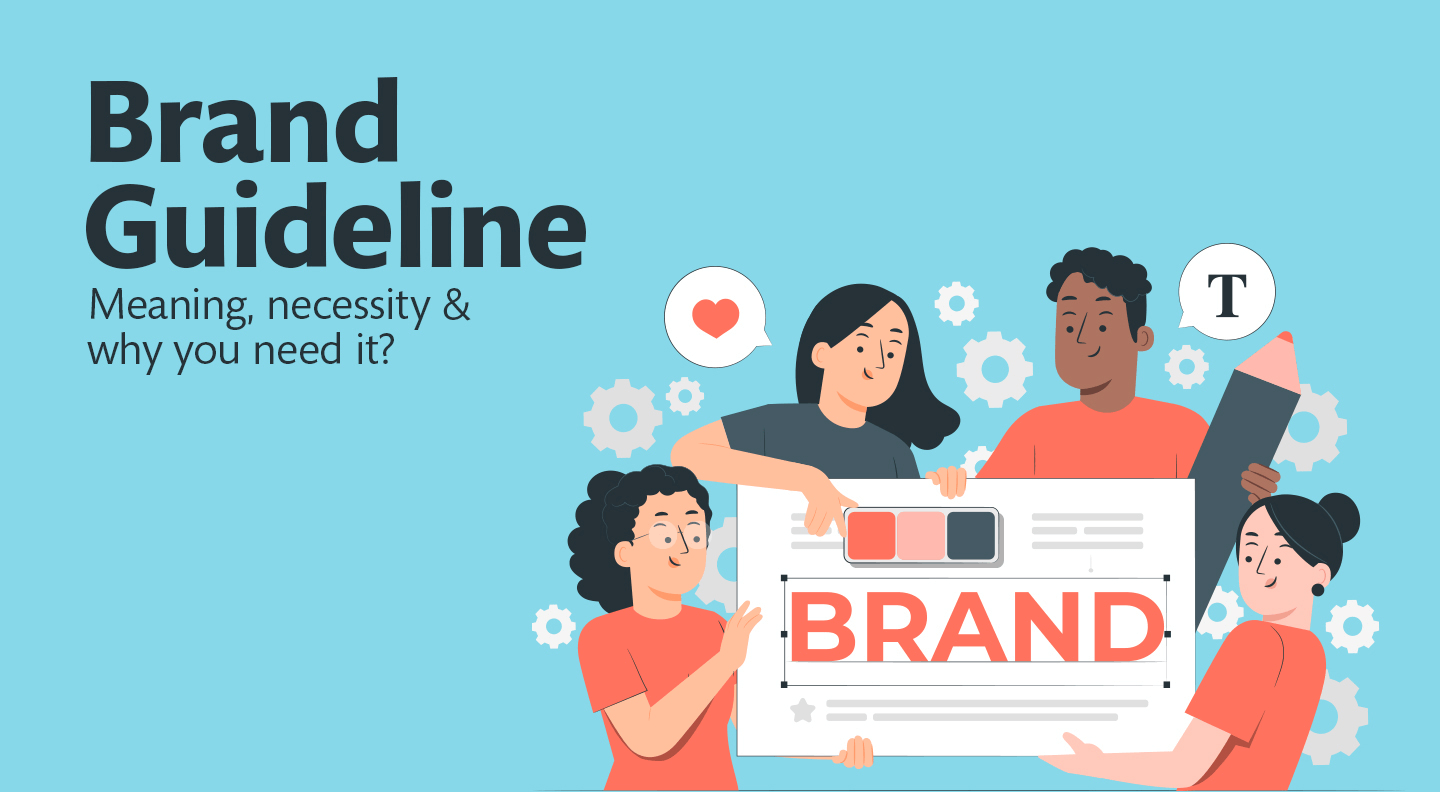Let's Talk
We would love to hear from you. Want to know more about our services or have any questions? Say Hi!
What are Brand Guidelines?

Brand Guidelines? What are they?
Brand guidelines are like a manual guidebook of a brand. It consists of very specific principles regarding what colour palette and tone of voice must govern a brand’s marketing visuals and communication. It lists out the dos and don’ts to help everybody surrounding the brand – from copywriters, graphic designers, animators, and web developers, to customer executives, and even external agencies; to maintain a consistent brand image.
Why Does Anyone Need Brand Guidelines?
Makes a Brand Look Recognizable
I know this Brand! Do you see friendly colours? Tagline? Your favourite brands never need to introduce themselves with their name. Brand guidelines bring consistency in the use of colours, typography, copy tone, symbols, and more which makes the brand easily identifiable in public. Infamous brands or even regular ones have a certain look and feel to them if they stick firmly with their respective brand guidelines.
Maintains a Brand’s Consistency
I trust this Brand!Brand consistency means the way a firm presents its brand and what it stands for is the same across all marketing channels. With the help of common brand guidelines for all, maintaining this consistency becomes easier. supports standing out of the competency, builds brand authority, and most importantly enhances customer trust and loyalty.
Helps in Avoiding any Confusion
This is how it should be done! There are certain fonts and colours to portray their respective qualities. For example, McDonald’s uses kid-friendly colours. If they decide to switch to sophisticated greys and blacks, it won’t relate to being a family-friendly affordable fast-food restaurant anymore. Brand guidelines also communicate common rules and regulations to both internal and external stakeholders so that there is consistency and no confusion regarding usage in design and verbal communication.
Creates a Good Impression and Brings Value
You can trust this one! Brand guidelines define principles about interaction with customers, brand positioning, values, leadership, innovation, ethics, and more. These develop the brand’s quality positioning and integrity. A unique brand story is conveyed which delivers respective unique values attached to the brand. It builds the brand’s image and customer loyalty stronger.
Develops a Clear Understanding of a Brand
This goes along well! All the employees must have a clear understanding and answer to what are the brand guidelines. It makes sure that everyone’s goals and work are aligned with a common perspective. If everyone related to the brand knows its emotion, context, and essence, through knowing brand guidelines, then communication to both offline and online worlds is quite impactful.
What Does a Brand Guideline Include?
Following are the basic things – Hard and Fast ‘To-Do Checklist’ – that must be included when you decide on how to create brand guidelines and what to include –
Mission and Vision statements
These statements define the organization’s business, goals, aspirations, and key characteristics. If a company has been in the industry for years and becomes a legacy then, a certain palette of brown-white hues along with ‘prestigious’ content is used for advertising materials. Respectively, a different combination of hues and words is used for a flourishing startup.
Core values and ethics
Values directing an organization shape the importance of its work and its soft characteristics. There could be another organization providing the same product or service but what sets this establishment apart is developed by its core values and ethics. Hence, brand guidelines must lay out everything that portrays the institution as unique.
Brand tone of voice
It refers to how a brand communicates with its audience – their choice of words aligning with respective pictures and values showcase the brand’s current principles and futuristic aspirations. For example, if an organization uses the word innovation and growth quite usually then they are continually expanding. Another organisation’s product which is related to emotional perspective can use respective words like nourishing or care. It is definitely necessary that a brand’s actions align with their tone of communication which makes the audience resonate with them better.
Colour Palette
According to research and data analytics, colour improves brand recognition by up to 80 per cent and hence, plays a larger role in building a brand’s personality and how it is perceived. Colours also have a physiological effect on the minds of humans which is why certain colours are appropriate for the brand depending on its product/service and message to the audience. For example, blue brings up emotions such as trust and professionalism whereas green points out health and growth. Drawing out a unique colour palette for instant recognition and bringing up the right emotions among consumers is a necessary part of laying the brand foundation.
Logo and its usage
A logo is the most essential part of a brand. Its formulation can be a whole different topic. But, only not the visual and verbal elements of the logo matter, its usage too. The logo usage guidelines elaborate on logo proportions, versions, space around the logo, colour palette, typography and font, rationale behind the logo, bad logo usage, background colours, and further such details. This is an integral part of brand guidelines as it portrays how the most important part of a brand – its logo should be used on different online platforms and offline materials. It maintains the highlight and integrity as per the brand’s requirements.
Typography
Typography is a type of logo, which has an essential role in bringing certain moods among the audience as per the brand’s requirements. For example, there is a difference between feminine and manly fonts which represent the brand’s product/service. Different typefaces induce different emotions, which is why we have so many classifications and guidelines to use them accordingly for clear representation. Typography gives a message before the words even. It is an extremely important element that sets the tone of the brand.
How do I create brand guidelines?
- Identify your internal and external users
- Develop your brand’s story or quality essence
- Define logo usage Dos and Don’ts
- Frame your brand’s colour palette and typography
- Establish respective principles for different media channels
- Specify visual and verbal style
- Educate internal and external stakeholders
- Plan for the evolution of your brand and its guidelines
Brand Guidelines and Brand Identity – Are they the same?
Brand guidelines shape brand identity. Guidelines are practical, tangible, logical, and readable tools that ensure that a brand’s identity is consistent across all its touchpoints. It covers how the brand’s identity must be expressed in various media and contexts. A brand’s identity must encapsulate all its brand guideline elements including colours, style, story, values, content, typography, and pictures.
The LIT guideline
In the words of Litmus Branding, brand guidelines are the navigators towards building a brand’s visual and communication identity. It talks about the idea and positioning of the organisation as well as develops its verbal ecosystem. It guides about the proper usage of the logo, fonts, typography, corporate graphics, illustrations, etc. In addition, it also clearly defines what not to do, with respect to the brand’s communication and design. At our agency, designers, copywriters, and all the people who work in the formation of brand guidelines first understand the brand’s idea behind the brand and positioning. We also develop our own creative suggestions for how the brand’s guidelines and identity can be formulated concerning its communication and design. So if we go from scratch to brand, our first step would be understanding ‘YOU’ – how you want your brand to look and what your ideas are. Next, we work with you to understand your product’s/service’s target audience. We brainstorm about who are going to be your brand’s (potential) consumers and what kind of communication design will appeal to them. Once the understanding part is over, thinkers wear the caps of creators at our agency to bring out the best combination of visual and verbal elements along with their usage on different platforms, that resonate well with your brand and audience.


